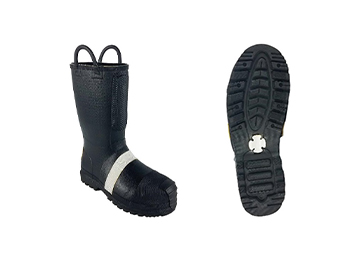Do Rain Boots Work in Snow?
When winter arrives and the snow begins to fall, many people find themselves navigating icy sidewalks, slushy streets, and deep snowdrifts. With the challenges of winter weather, choosing the right footwear becomes essential. Rain boots, often a staple for wet weather, raise an important question Do they work effectively in snow?
To begin with, it's essential to understand the primary design and purpose of rain boots. Typically made from rubber or waterproof materials, rain boots are intended to keep your feet dry during rainy conditions. They often come with a flat sole and minimal insulation, making them lightweight and easy to wear. However, their effectiveness in snowy conditions can vary significantly based on their specific features.
Insulation Matters
One of the most crucial factors to consider when determining if rain boots can handle snow is insulation. While rain boots are excellent at preventing water from entering, they often lack the thermal insulation necessary to keep your feet warm in cold temperatures. Snowy conditions can cause your feet to become cold quickly, particularly if you are walking in snow for extended periods. If you're wearing rain boots in subzero temperatures, you could find your feet feeling uncomfortably cold and numb.
Traction and Sole Design
Another factor to consider is the traction provided by the boots. Rain boots typically come with flat soles that are designed for slippery wet surfaces rather than icy or snowy conditions. This can lead to a significant risk of slipping and falling when navigating snowy or icy ground. Some rain boots have a textured sole that provides better grip, but they still may not perform as well as boots specifically designed for winter weather, which often feature deeper treads and specialized rubber compounds that enhance grip on ice and snow.
Height and Coverage
rain boots work in snow

Rain boots generally come in various heights, but many do not provide sufficient coverage for deep snow. Traditional rain boots might only reach mid-calf or lower, which could result in snow entering the boot if you're walking in deeper snow or stepping in mounds. Snow boots, on the other hand, tend to have higher shafts and features like snow cuffs to prevent snow from getting in, which can keep your feet dry and warm.
Liner and Breathability
Some rain boots offer removable liners, while others do not. Liners can provide an extra layer of insulation and breathability, which is particularly key in cold and wet conditions. Without a liner, you risk having moisture build up inside the boot from sweat, which can lead to cold, clammy feet. Therefore, if your rain boots do not have an insulated lining, they might not be suitable for long bouts of heavy snowfall.
Alternatives to Rain Boots
For navigating snow, specially designed snow boots or insulated winter boots are usually the best choice. These boots come with thick insulation, waterproof materials, and superior traction. They also often have adjustable snow collars to prevent powdery snow from entering the boot and can handle a wide range of winter conditions, from slush to deep snow.
On the other hand, if you only have rain boots and are caught in an unexpected snowstorm, there's no need to despair. For short trips, and if the snow isn't too deep, rain boots can suffice. However, if you plan to spend extended periods outside in snowy conditions, investing in a quality pair of winter boots is advisable.
In Conclusion
In summary, while rain boots can provide some level of protection and usability in light snow or slushy conditions, they are not the most reliable option for serious winter weather. Their lack of insulation, inadequate traction, and lower height can make winter navigation a challenge. It’s best to rely on appropriate winter footwear designed specifically for snowy conditions, which will keep your feet warm, dry, and safe from slips and falls. Proper preparation ensures that you can fully enjoy the beauty of winter without the worry of cold, wet feet. So, while rain boots can tackle puddles, when it comes to snow, it's time to laces up those winter boots instead!
-
Stay Dry in Any Condition with WadersNewsJul.17,2025
-
Elite Performance with Camouflage Combat BootsNewsJul.17,2025
-
Dry and Comfortable with Green Rubber Garden ShoesNewsJul.17,2025
-
Convenient Protection with Foldable RainbootsNewsJul.17,2025
-
Comfort and Protection with Neoprene Work BootsNewsJul.17,2025
-
Brighten Rainy Days with Floral Rain BootsNewsJul.17,2025
-
Safety Wellies: The Ultimate Combination of Protection, Comfort, and VisibilityNewsJun.19,2025











